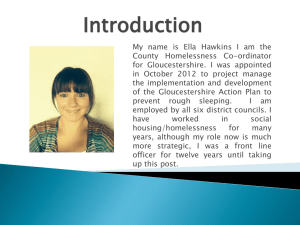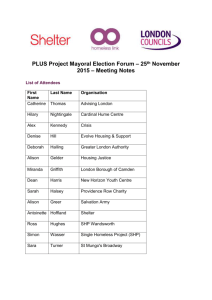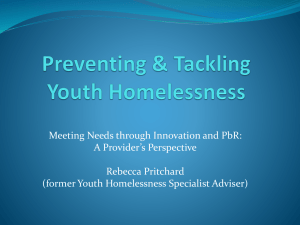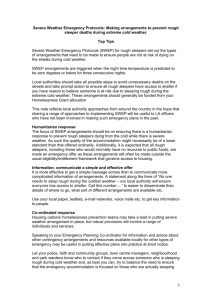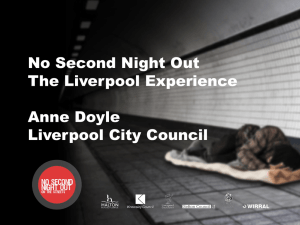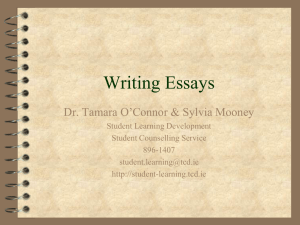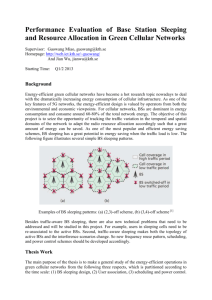Adopting a Local Approach to Ending Rough Sleeping
advertisement
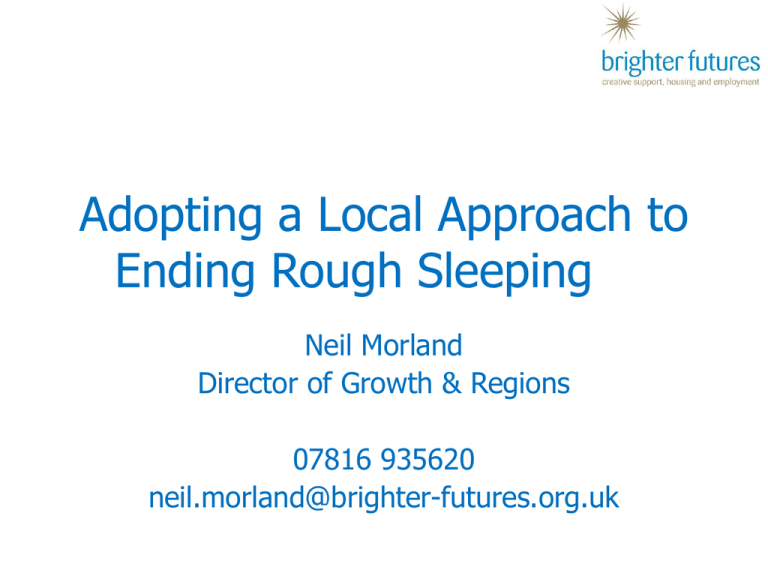
Adopting a Local Approach to Ending Rough Sleeping Neil Morland Director of Growth & Regions 07816 935620 neil.morland@brighter-futures.org.uk Evidence • Research shows homelessness arises from a complex combination of – social factors (individual and/or inter-personal problems) and – structural factors (housing and/or economic problems). • For rough sleepers social factors are the primary cause of homelessness with structural factors as a secondary cause. • Analysis of CHAIN data shows that – a third of rough sleepers are new people who flow onto the streets – another third are people stuck sleeping rough – the final third are people returning back and forth from the streets in-between being in living at a hostel, supported housing, rented accommodation, families/friends, prison, and/or hospital DCLG • Government statistics published February 2011 show that on any given night 1,768 people can found to be sleeping rough in England. • A cross government departmental working group has been established to oversee the development and delivery of a new framework for ending rough sleeping • The Government defines rough sleeping as People sleeping, about to bed down (sitting on/in or standing next to their bedding) or actually bedded down in the open air (such as on the streets, in tents, doorways, parks, bus shelters or encampments). People in buildings or other places not designed for habitation (such as stairwells, barns, sheds, car parks, cars, derelict boats, stations, or “bashes”). Strategy • Local partners agree a plan that sets out when the Government’s ambition can be achieved in the local area. • Local delivery boards to oversee the implementation of local plans for ending rough sleeping. • Local practitioner groups to get the most entrenched street homeless people off the streets that adopt the following as definition of someone who is an entrenched rough sleeper – Been seen sleeping rough in the past 3 months – Been sleeping rough in 5 or more years out of the past 10, and/or – Been seen sleeping rough at least 50 times during that period Prevent people from becoming street homeless • Do more to prevent non-priority single people from becoming street homeless • Improve access to private sector accommodation for preventing non-priority people from becoming homeless, and also for planned move-on Help people off the street • Community/public intelligence and engagement, including a 24 hour phone line • 24/7 response from street outreach teams including assessment of needs and referrals into accommodation • Reconnection to other areas across the UK for people not from the local area • Severe weather emergency provision Stop people from returning to the streets • Develop a ‘working hostel’ for people who are jobready • Adopt the successful practices learnt from the Government’s the personalisation pilot for helping street homeless people • Establish a specialist service to meet the psychological and emotional needs of street homeless people and tackles complex trauma • Target specialist interventions for street homeless people with no recourse to public funds Resources • Sustainable funding is central to successfully ending rough sleeping • Services commissioned on outcomes based framework • Collaborative planning and commissioning . 5 Whittle Court, Town Road, Stoke-on-Trent, ST1 2QE t: 01782 406000 e: info@brighter-futures.org.uk w: www.brighter-futures.org.uk
